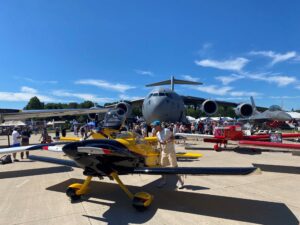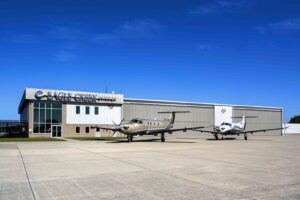MSG-3, not monosodium glutamate…
Embraer’s recent maintenance program changes – why/how did they make the changes?
Some years ago, the ATA got together and created a Maintenance Steering Group, hence the name “MSG.” It has evolved from a -1 to a -2 to the current -3 version, with input from the various Airlines, Aircraft and Engine Manufacturers.
There is not a lot of room here to expound on the evolvement of MSG and there are several good references online, such as the Skybrary, Boeing and Sofema Aviation Services websites. I extracted information from the above sources for the first section of this blog. Some verbiage is mine and some is from the sources noted above.
MSG-3 (Maintenance Steering Group) ‘Operator/Manufacturer Scheduled Maintenance Development’ is a document developed by the Airlines for America (A4A) (formerly ATA) a group consisting of some 23 players. It aims to present a methodology to be used for developing scheduled maintenance tasks and intervals, acceptable to the regulatory authorities, the operators, and the manufacturers. The main idea behind this concept is to recognize the inherent reliability of aircraft systems and components, avoid unnecessary maintenance tasks and achieve increased efficiency.
The underlying principles are that:
- Maintenance is only effective if a task is applicable
- There is no improvement in reliability by excessive maintenance
- Needless tasks can also introduce human error
- Few complex items exhibit wear out
- Monitoring is generally more effective than hard-time overhaul – Condition-based maintenance (sometimes known as CBM)
- Reliability is only improved by modification
- Maintenance may not be needed if failure is cheaper (less expensive to replace the item than to tear it apart and rebuild). Think of sealed items with no way to repair them.
MSG-3 is widely used to develop initial maintenance requirements for modern commercial aircraft which are published as a Maintenance Review Board Report (MRBR).
MSG-1 was first published in 1968 and used for developing scheduled maintenance for the Boeing 747.
MSG-2 was subsequently developed and used for development of scheduled maintenance programs for 1970’s aircraft such as L1011 and DC-10. MSG-2 was process orientated and used a bottom-up approach. It also introduced the ‘condition monitored maintenance’ concept.
Based on the experience and the identified weaknesses of MSG-2, the original version of MSG-3 was first published in 1980, introducing a top-down approach by focusing on ‘consequences of failure.’ MSG-3 expected the assessment of functional failures and the assignment of the consequences of those failures into two basic categories, ‘SAFETY’ and ‘ECONOMIC.’ Unlike MSG-2, MSG-3 is task orientated and this eliminated the confusion associated with the different interpretations of ‘Condition Monitoring,’ ‘On-condition’ and ‘Hard time.’ The other fundamental improvement was the recognition of ‘damage tolerance rules’ and the ‘supplemental inspection programs.’
Since 1980, regular amendments have been made to MSG-3, the most recent was in 2015 but, as yet an MSG-4 has not followed. The latest version of MSG-3 introduced some elements related to Structural Health Monitoring Systems (SHMS), which was the result of issue papers published by the International Maintenance Review Board Policy Board (IMRBPB).
As experience with an aircraft type accumulates, the Type Certificate Holder (or manufacturer) and the various operators typically revise/update the Maintenance Planning Document (MPD) throughout the aircraft model’s life. Typically, the initial MPD is conservative, and task intervals may be increased as experience is gained. Maintenance periods may also be extended as components are modified to give longer life. However, all extensions are agreed upon in a controlled manner and under regulatory oversight.
This methodology has a task-oriented approach to maintenance that analyzes system failure modes from a system level, or top down. Maintenance tasks are performed for safety, operational, or economic reasons. They involve both preventive maintenance and failure finding tasks.
So how does this affect your Phenom?
Ok, so now that is out of the way what has Embraer done to their maintenance programs? Utilizing the MSG philosophies has allowed them to look at the maintenance history of the Phenoms and make adjustments to the programs to reduce overall costs by doing such things such as increases, or decreases, in intervals between inspections and changes to individual tasks. Embraer has had roughly 10 years of continually looking at the Phenoms fleet analyzing data from service centers, customers, spares usage history, and parts failure details, to enable making changes to the inspection programs tasks. As a result of their historical analysis, Embraer posted changes in June of 2020 to the inspection packages for the second time.
There have been other postings on this subject but here are my notes on the changes.
For the Phenom 100 model, the changes included revising the hourly based inspection intervals, for example – from 600 hours to 800 hours and some packages now have even longer inspection intervals (an average of 200 hours more between inspections). The total number of hours-based inspection packages was reduced from 19 packages to 7 packages. A few special and component specific item inspection tasks were added.
For the Phenom 300 model the changes were similar: The changes included revising the hourly based inspections also from 600 hours to 800 hours and some packages now have even longer inspection intervals (an average of 200 hours more between inspections). The total number of hours-based inspection packages was reduced from 19 packages to 12 packages. A few special and component specific item inspection tasks were added.
The point of all this is that using the MSG-3 approach has allowed the manufacturer to reduce the overall cost of ownership of these aircraft and decrease the number of downtime events.
Mike Grabbe is an award-winning instructor and technical advisor at Eagle Creek Aviation.





